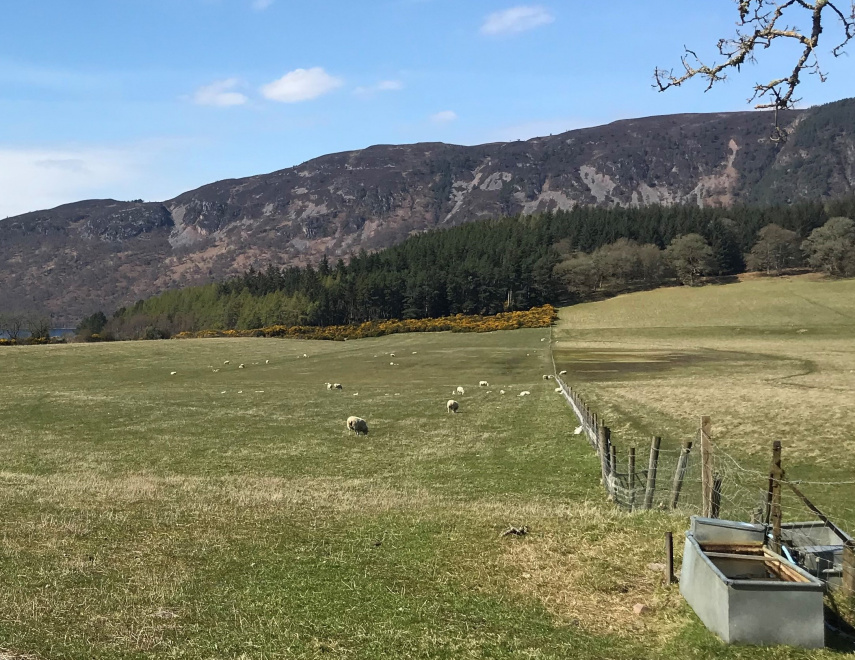
Guidance on Carbon Credits – What You Need to Know
Bob McIntosh
In his latest blog, Tenant Farming Commissioner Bob McIntosh explores his guidance on carbon credits related to agricultural holdings legislation – published today – and its implications for both tenants and landlords.
With all the talk about new investors buying land to offset carbon against their own businesses, or to trade in carbon credits, I’ve been looking into whether tenants and landlords of agricultural holdings could also benefit from emerging markets in carbon. Agricultural holdings legislation and the rules within the Woodland and Peatland Carbon Codes have particular implications for a tenant or landlord wishing to acquire carbon credits and I explain these, and the principles of carbon credit trading, in a new Tenant Farming Commissioner guide published this week.
It's not difficult to be put off by the unfamiliar language around carbon trading and transitioning to net zero. But we are all going to have to engage with it sooner or later as support for the agriculture sector is set to align with government objectives to meet climate change targets and enhance biodiversity. So, what is a carbon credit? If a farmer or landowner carries out an activity such as peatland restoration or woodland creation that removes additional carbon from the atmosphere, credits can be attached to the activity in proportion to the amount of carbon removed. The farmer or landowner may be able to sell those credits to another business that needs them to offset emissions from their business. This has created a market in carbon credits that are traded at a price that reflects current supply and demand and other market conditions. In some situations the value attached to validated carbon credits can be significant and the price of carbon continues to rise. Whilst selling carbon credits may therefore seem lucrative, it’s definitely worth considering whether any carbon benefits generated may be best retained by the landlord or tenant to enable either of their businesses to demonstrate net carbon neutrality.
Scotland, and the rest of the UK, is of particular interest to buyers of carbon credits due to the integrity of the verified carbon credits. Buyers want the assurance that the carbon benefits claimed have been properly validated and they are being generated through a responsible scheme which has recognised standards and procedures. The UK Carbon Codes provide these standards, and at the moment the only codes in operation are for active peatland restoration and new woodland creation. As the market develops, other codes are likely to emerge for other land-based carbon sequestration activities such as soil carbon enhancement and hedgerow creation.
Compliance with the codes is not a simple matter and anyone considering entering a scheme should take time to study the requirements and implications, particularly those relating to change of ownership of the land over the course of the project and the risk of natural events, such as storms, diminishing the expected benefits. The projects are expected to have relatively long duration, perhaps several decades, and disengagement part way through may prove difficult or expensive so such schemes are not to be entered into without careful appraisal of all the implications. The carbon market is not well developed and changes in the way that it operates seem certain to take place so caution should be exercised when considering if and when to become involved in generating and trading carbon credits.
Tenants and landlords must also consider their relevant legislative position with regard to their lease and its terms. My new guide provides information for both tenants and landlords with secure (1991 Act) tenancies and fixed duration (2003 Act) tenancies. For example, in 1991 Act tenancies, if there is no written lease or no specific clause within a lease that permits resumption, the landlord has no right to resume land for woodland creation or peatland restoration. Where the landlord has a contractual right of resumption, they may seek to resume the land but that is subject to challenge by the tenant if the resumption is contrary to the good faith of the lease and is of such a scale or nature that it will affect the likelihood that the farm can continue to be tenanted as an agricultural subject.
My guide explains that due to the requirements of agricultural holdings legislation and the conditions attached to the Carbon Codes, tenants cannot generally proceed with peatland restoration or woodland creation without the agreement of the landlord, and that landlords are limited in their ability to resume land without the agreement of the tenant. However, given the potential benefits of peatland restoration and woodland creation schemes to landlord and tenant, there is ample incentive for the parties to get together to explore the possibility of entering into a contractual agreement that enables a project to proceed in a way that benefits both parties.
I recommend that the parties enter into a discussion to determine what type and scale of project, if any, would be appropriate and acceptable to both parties. Thereafter, agreement will be needed on who is taking the lead in delivering the project and how responsibilities, costs, and incomes are to be shared. Careful consideration of the conditions attached to the codes is required to ensure that the rights and responsibilities of both parties are established and that the agreement is robust enough to meet the code conditions and to deal with future changes in landlord or tenant, or in the event that the project doesn’t deliver the anticipated carbon benefits. If agreement can be reached on all points, it is strongly recommended that the parties enter into a legal contract that binds both parties to respect the agreements made.
For further information on securing tradeable carbon credits in an agricultural holdings situation, please see my new guide, which will be updated periodically to reflect further development of the carbon market.
To find out more visit landcommission.gov.scot or call 01463 423 300.
